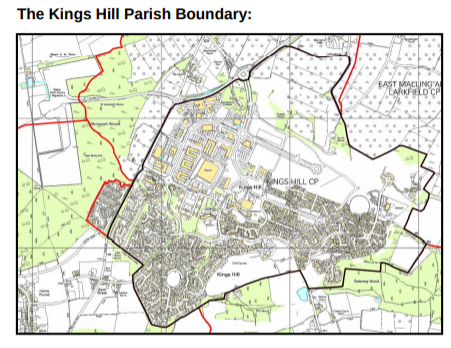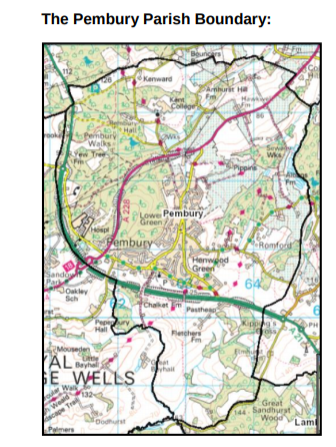Our Practice Papers and Answers
KENT ENGLISH AND MATHEMATICS PAPER 1
The test papers we’ve shared above are in a similar style to the Kent Test papers and those typically delivered as 11 Plus assessments by Cranbrook School.
New 11+ practice papers are sent out via email every Friday. You can sign up to receive these, every week, using the form above.
Other Sample Papers and Answers
English Paper 1
English Paper 2
English Paper 3
Maths Paper 1
Maths Paper 2
Maths Paper 3
Verbal Reasoning Paper 1
Verbal Reasoning Paper 2
Verbal Reasoning Paper 3
Non-Verbal Reasoning Paper 1
Non-Verbal Reasoning Paper 2
Non-Verbal Reasoning Paper 3
The 11 Plus test papers we’ve shared above are in a similar style to those typically delivered as 11 Plus assessments by Cranbrook School.
About the School
Address — Cranbrook School, Waterloo Road, Cranbrook, Kent, TN17 3JD
Type of school — Mixed, boarding grammar school
Cost — Education is free, boarding is paid.
Please note, boarding is only available from years 9-11. There are no spaces available to board from year 7.
Religion — Christian
Pupils in school — 900+
Places available in year 7 — 60+
Average applicants per place — 2 or more
Catchment area — Cranbrook School does have a catchment area which is based on distance from the school (up to 8.5km from the school). This is made up of the parishes of Cranbrook, Sissinghurst, Goudhurst, Staplehurst, Frittenden, Benenden, Sandhurst and Hawkhurst.
Oversubscription policy — Before the application of the oversubscription criteria, children with a Statement of Special Educational Needs (SEN) or Education, Health and Care Plan (EHCP) who name this school will be admitted.
Where qualifying applications for admission exceed the number of places available, places will be allocated in the following order of priority:
Eligible students who are presently or were previously in Local Authority care.
Eligible students who are in receipt of a pupil premium or service premium and live within the catchment area.
Eligible students who demonstrate health and special access reasons and live within the catchment area.
Eligible students who live within the catchment area, prioritised in order of their score in the Kent Test.
Eligible students who live within the catchment area, prioritised in order of their score in the Kent Test.
If two candidates draw for the last place, it will be allocated at random.
School Summary
Cranbrook School was established in 1518 and is a mixed, boarding grammar school in Cranbrook, Kent. It accepts both day and boarding students, but boarding is only available from year 9 onwards. It became an academy in 2011.
The school focuses on:
Promoting high academic achievement.
Providing pastoral care of the highest order.
Building character.
Find the most recent Ofsted reports here.
Compare this school’s performance with other local schools here.
Exam Information
Exam style —GL Assessment/The Kent Test
Exam topic:
Reasoning
Verbal, non-verbal and spatial
English and maths
Creative writing
Exam length — 2 x 1 hour exams + a 40-minute writing exercise.
Pass rate — In recent years, 15,000+ applicants took the Kent test; only 6,500 passed.
Other exam information:
The reasoning, English and maths tests are multiple-choice with a separate answer sheet.
The first test will be an English and Maths paper. Each section will include a 5 minute practice exercise followed by a 25 minute test. The English section will involve a comprehension exercise as well as some additional questions drawn from a set designed to test literacy skills.
The second test will be the reasoning paper. It will take about 1 hour, including the practice sections and questions. It will contain a verbal reasoning section and a non-verbal reasoning section of roughly the same length. The non-verbal reasoning will be split into short sections, administered and timed individually.
Finally, there will also be a writing exercise which will not be marked but may be used by a local headteacher panel as part of the headteacher assessment stage of the process. 40 minutes will be allowed for the writing task, including 10 minutes planning time.
Scores:
Your child will get three standardised scores (one for English, one for maths and one for reasoning) and a total (aggregate) score.
Standardisation is a statistical process which compares your child's performance with the average performance of other children in each test. A slight adjustment is made to take account of each child's age so that the youngest are not at a disadvantage.
Pass mark:
To qualify, children needed a total score of 332 or more, with no single score lower than 108. Test scores range from 69 to 141. The highest possible total score is 423.
If your child did not reach this threshold score and their primary school referred their case to the local Head Teacher Assessment Panel, the panel will have looked at their achievement in school and examples of their work, including the writing task completed on the day, before a final decision was made.
Please note that a score of over 332 does NOT mean your child is guaranteed a place at your chosen school.
Contact information
Website — https://www.cranbrookschool.co.uk/
Contact — https://www.cranbrookschool.co.uk/contact-us/
Facebook — https://www.facebook.com/cranbrooksch/
Twitter — https://twitter.com/CranbrookSch
Instagram - https://www.youtube.com/user/CranbrookSchool2012
LinkedIn — https://www.linkedin.com/in/cranbrook-school-0522a4117/?originalSubdomain=uk
Eleven Bonus Resources For 11 Plus Success
✅ Free Weekly 11 Plus English, Maths and Verbal Reasoning Testing
📑 11 Plus Exam Syllabus — GL, CEM, Kent, Sutton SET, ISEB, CAT4 & Independent
🧠 How To Prepare For 11 Plus (11+) Verbal Reasoning — A Complete Guide
📖 How To Prepare For 11 Plus (11+) Comprehension — A Complete Guide
✏️ How To Prepare For 11 Plus (11+) Creative Writing — A Complete Guide
Have a listen to our 11 Plus Vocabulary Podcast and expand your child’s vocabulary one word at a time.
You can find all 300+ episodes of The 11 Plus Daily Vocab Show Podcast on:







